new posts in all blogs
Viewing: Blog Posts Tagged with: Leisure, Most Recent at Top [Help]
Results 26 - 50 of 107
How to use this Page
You are viewing the most recent posts tagged with the words: Leisure in the JacketFlap blog reader. What is a tag? Think of a tag as a keyword or category label. Tags can both help you find posts on JacketFlap.com as well as provide an easy way for you to "remember" and classify posts for later recall. Try adding a tag yourself by clicking "Add a tag" below a post's header. Scroll down through the list of Recent Posts in the left column and click on a post title that sounds interesting. You can view all posts from a specific blog by clicking the Blog name in the right column, or you can click a 'More Posts from this Blog' link in any individual post.

By: Lauren,
on 2/11/2011
Blog:
OUPblog
(
Login to Add to MyJacketFlap)
JacketFlap tags:
pirates,
Sports,
Technology,
e-books,
Current Events,
Geography,
Leisure,
paula deen,
pirate,
Egypt,
kobe bryant,
black swan,
bryant,
cairo,
linked up,
*Featured,
Trenta,
frak,
clabwag,
cgpgrey,
cockeyed,
kobe,
Add a tag
It’s been a few weeks since I’ve written a Linked Up, but with releasing a new episode of The Oxford Comment, working “frak” into my daily vocabulary, and trying to keep up on developments in Egypt, I’ve not found the time! Hopefully, today’s will make up for it. Have a wonderful weekend everyone!
P.S. I promised our Twitter followers that if they came up with at least 5 good questions about insects I would have an entomologist answer them, so send in yours!
Apparently Kobe Bryant told Pau Gasol he needed to be more “black swan” on the court. [NYMag]
I was shocked by this: “Vodafone Forced to Send Pro-Government Text Messages in Egypt” [RWW]
There is a wonderful new Paula-Deen-as-hipster meme [Clabwag]
I have a lot of colleagues in the UK, so this “everything you ever wanted to know about the UK/GB/England in five minutes” was very helpful. My favorite (favourite?) part: “BFFs 4EVA USA?” [CGPGrey]
And since we’re on the topic of geography, I might as well present this from XKDC:
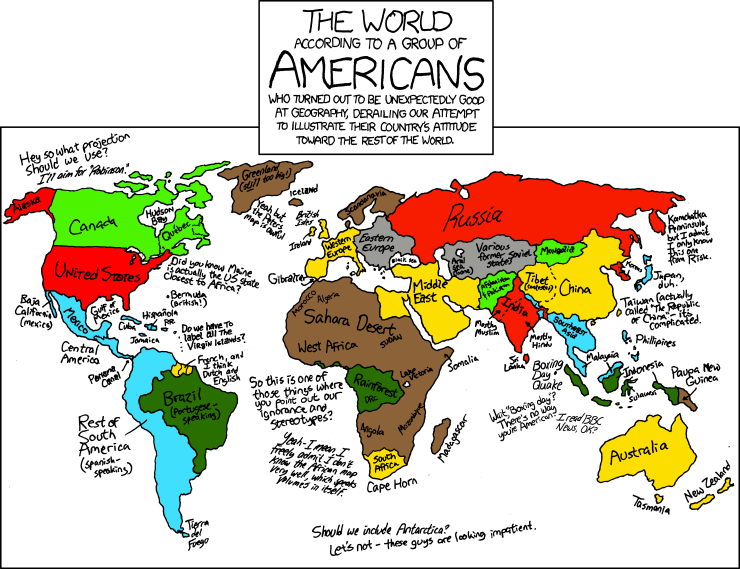
Yes, it’s been around for a while, but I think it’s important to remind everyone that you can talk like a pirate on Facebook. [NextWeb]
You got a few minutes to make some fleeting art? Then try this.
If you didn’t see the update to our article “Why the Trenta?” I’m sure you’ll be delighted to learn that Starbucks’ newest size can hold an entire bottle of wine. [Cockeyed]
Oh Apple, you’re so sneaky. [Atlantic]
Protesters are awesome: Egyptian volunteers clean the streets [Good]
And now, an enormous infographic:


What’s The Oxford Comment?
In Spring 2010, Michelle Rafferty and Lauren Appelwick (you can read their bios here) decided it was time Oxford University Press got a podcast, and by September, The Oxford Comment was born. Reporting at special events, live on the street, and from the “studio,” each episode features commentary from Oxford authors and friends of the Press.
How can I hear more of that super groovy background music?
Most of the music you hear is by The Ben Daniels Band. You can check them out here.
How can I get ya’ll on my iPod, or Zune, or whatever?
Pretty easy, just subscribe on iTunes.
The Oxford Comment podcastography
February 3, 2010
What IS beauty anyway?
- “The Icon” – Duane Roller discusses the ongoing influence of Cleopatra’s beauty (although we don’t really know what she looked like!)
- “The Beauty Bias” – Deborah Rhode discusses the pervasiveness of appearance discrimination.
- “The Fat-o-sphere” – Margitte Kristjansson and Jessica Jarchow talk body politics, “headless fatties,” s-heroes, and Glee!
- “The Safety Pin” – Fashionistas at FIT discuss whether or not clothing makes you beautiful.
January 13, 2011
Part 2 of this series looks at the ongoing debate between science and religion.
- “Why are Unicorns Hollow?” – Steve Paulson, Executive Producer of NPR’s To the Best of Our Knowledge, shares clips of interviews with famed atheist Richard Dawkins and chimpanzee advocate Jane Goodall.
December 21, 2010
Happy Birthday to the jazz legend who would be turning 103 this December 25th.
- “Hi-De-Ho” – BBC Producer Alyn Shipton on the pioneering ways of Cab Calloway.
- “Trickeration” – Vince Giordano plays the bandleader at Babette’s nightclub on HBO’s Boardwalk Empire. Michelle pays a visit to the real nightclub where Giordano keeps the music of the Jazz Age alive.

By: Michelle,
on 1/31/2011
Blog:
OUPblog
(
Login to Add to MyJacketFlap)
JacketFlap tags:
photos,
Central Park,
winter,
Sports,
snow,
New York City,
Architecture,
park,
sledding,
Leisure,
playground,
monaco,
hybrid,
AIA Guide to New York City,
aia,
*Featured,
winter activities,
winter sports,
paths,
Pilgrim Hill,
yorkers,
bleacher,
“simple”,
Add a tag
By Michelle Rafferty
After a nice little afternoon in Central Park yesterday, I consulted the AIA Guide to New York City to read up on the history of the 840 acre playground (which, I learned, is larger than Monaco). I share with you now my gleanings on how the park came to be the funky hybrid of leisure and active sport it is today, as well as my own thoughts on why parks prove we all really aren’t that different.
Long before its completion (which took 20 years and ten million cartloads of stone, earth, and topsoil) New Yorkers rich and poor alike flocked to Central Park “to promenade, to see and be seen.” Originating from William Cullen Bryant’s call for a large public “pleasure ground,” its design was “simple” and “picturesque”: trees and open space, individually designed bridges, rock outcroppings, footpaths, bridle paths, the revolutionary cross-town road, and carriage drives that were curved to prevent racing.
And these plans were closely followed until the early 20th century when the automobile and active sports arrived. Since then, the gravel paths were paved, and tennis courts, playgrounds, and even a hybrid ice-rink/swimming pool have been added. Today, the New York Road Runners sponsor races of all distances in the park every month and one can buy a VIP bleacher ticket to the New York City Marathon finish line (on the west side of the park) for $75. These innovations have all added up to a sort of paradox – bikers and intense rollerblade squads do countless loops around the park’s six mile perimeter, while inside people enjoy leisurely picnics, nature hikes, and Shakespeare.
For transplants like me, Central Park provides a sweet sense of irony. Take sledding for example. I went to college in Michigan, a state where snow sticks about 5 months out of the year; here, a snow day is a holiday. That’s why, when walking by Pilgrim Hill (“the grand dame of NYC sledding institutions“) yesterday afternoon, I felt so obliged to stop and join the commotion. If it weren’t for the high-rises hovering around us, the scene could have been anywhere. Contrary to what some might think, New Yorkers sled just like everyone else. I have photographic evidence to prove it! I’ve posted some pictures below so you can a) enjoy the beauty of a snow covered Central Park and b) see that parks everywhere are threaded together by one of humanity’s most basic instincts: if there’s snow and hill, we’ll find a creative way to get down.
NEW YORKERS, WE…
GO HEADFIRST,
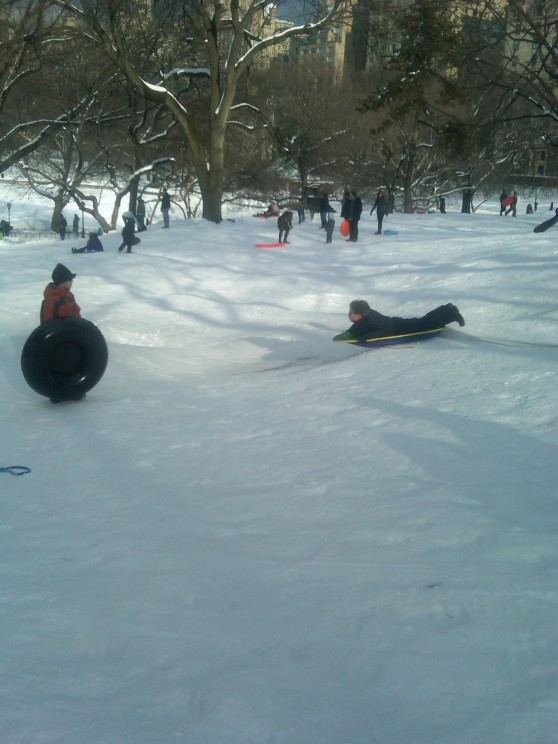
GO BUTTFIRST,
AND WE TAKE

By: Lauren,
on 1/28/2011
Blog:
OUPblog
(
Login to Add to MyJacketFlap)
JacketFlap tags:
dance,
advertising,
npr,
cake,
Washington Post,
Leisure,
New Yorker,
Egypt,
dancers,
happening,
mexican food,
linked up,
*Featured,
buzzfeed,
shoots,
baumann,
Add a tag
Nick Baumann is keeping us updated on what’s happening in Egypt [Mother Jones]
This Washington Post photo made me laugh [Buzzfeed]
It’s a dance dance revolution! [Jordan Matter]
A very interesting roundtable with Oscar-nominated actors [THR Network]
People + Words. What more could you want? [NPR]
It’s not like you ‘get’ most New Yorker cartoons anyway [The Monkeys you Ordered]
Some people are very serious about reading [Julian Smith]
I mean, I love messy, fake Mexican food, but… [Food Beast]
Philadelphia Man Shoots Friend for Eating His Cake [AOL News]
Things real people don’t say about advertising


By: Lauren,
on 1/14/2011
Blog:
OUPblog
(
Login to Add to MyJacketFlap)
JacketFlap tags:
internet,
fail,
youtube,
baby,
basketball,
donate,
national geographic,
dancing,
cave,
flooding,
Leisure,
orchestra,
bookshelf,
flood,
death penalty,
queensland,
penalty,
linked up,
*Featured,
the next web,
skillz,
Add a tag
I just wanted to extend a hello to our new readers, many of whom I had the pleasure of meeting at ALA in San Diego earlier this week. As always, if you have suggestions, questions, ideas about/for OUPblog, I more than welcome them. You can email me at blog[at]oup[dot]com. And now, I present the Friday links…
Incredible footage of the flooding in Australia [White Light Bringer] – Related: You can donate to Queensland flood relief here.
LOOK AT THESE CAVE PHOTOS! [National Geographic]
Baby learns to just say ‘no’ [via]
Orchestra fail [YouTube audio only]
This child dances better than we ever will [YouTube]
Falling books bookshelf [via]
Some amazing basketball skillz [Dunking Devils]
An interesting question about the death penalty [GOOD]
And from The Next Web, the answer to the question you’ve all been asking…



By: Lauren,
on 12/10/2010
Blog:
OUPblog
(
Login to Add to MyJacketFlap)
JacketFlap tags:
wordplay,
twitter,
pandora,
walrus,
short film,
vimeo,
speakeasy,
urlesque,
trending,
derulo,
julia,
Leisure,
boo,
james franco,
jesse eisenberg,
iPad,
justin bieber,
*Featured,
jason derulo,
jay sean,
Add a tag
14 actors acting. [New York Times]
Triumph of the week: I finally learned how to fold a fitted sheet! [Nag on the Lake]
If this doesn’t make you smile, I give up. [Best Roof Talk Ever]
Amazing video created for the German shortfilm competition “Kurzundschön” (Short & Nice). [Vimeo]
Did you know Jesse Eisenberg has a wordplay website? [One Up Me]
No luck trending on Twitter? Blame Justin Bieber. [WSJ Speakeasy]
The other day, I glanced at my Pandora, and it hit me that the singer Jason Derulo was actually Jay Sean Derulo. (If you don’t know who I’m talking about, good for you.) I was amazed – how had I not realized this before?! Because it’s not true. They’re actually two different people, but at least in looking it up, I stumbled upon this gem of a mash-up. [YouTube]
In the future, no one will burn books. [clu]
Remember that movie Julie & Julia? Yeah. Well. This takes it to the next level. [Urlesque]
This dog never stops being cute. Never. [Facebook]


By: Lauren,
on 12/3/2010
Blog:
OUPblog
(
Login to Add to MyJacketFlap)
JacketFlap tags:
novel,
piracy,
nanowrimo,
recycling,
Leisure,
bacon,
galleycat,
kanye west,
saturday night live,
subway,
hot wheels,
kevin bacon,
kevin,
kanye,
slash,
justin bieber,
bieber,
urlesque,
*Featured,
jay pharoah,
recyclable,
pharoah,
Add a tag
I always enjoy doing Linked Up because it gives me a chance to reflect on how I spend my free time on the internet. Apparently this week, I was a bit celebrity-obsessed.
Kevin Bacon is his own biggest fan. [Urlesque]
A subway car that’s 97.5% RECYCLABLE! [Good]
So you want to write a novel? Maybe you should watch this first. [DWKazzie]
And in related news…NaNoWriMo is over! (2,799,449,947 words later…) [GalleyCat]
If only I could actually type this into my browser… [Next Web]
Jay Pharoah, a new cast member of Saturday Night Live, is my favorite impersonator of the moment. (Magic starts at 2:50.) [David Letterman Show]
Can you pass the Kanye West quiz? [New Yorker]
Apparently, pirating music is so last year. [Wired]
1200 Hot Wheels all at once? Yes please! [Kottke]
Justin Bieber is talented in ways you never even imagined. [GawkerTV]


By: Lauren,
on 11/12/2010
Blog:
OUPblog
(
Login to Add to MyJacketFlap)
JacketFlap tags:
celebrities,
cats,
Art,
billy collins,
twitter,
Leisure,
collins,
billy,
linked up,
guggenheim,
*Featured,
photobomb,
time lapse,
tofugu,
dumage,
photobombing,
buzzfeed,
Add a tag
This week I decided not to make the interns do my work. Here’s a Linked Up with lots of videos and pictures. (Yippee!)
This is a video of a 3-year-old reciting Billy Collins’ “Litany” from memory and no I’m not kidding. [YouTube]
If bio class made you squeamish… [Make]
Ta-dah: the 10 most followed people on Twitter who aren’t celebrities. [Business Insider]
This is some groundbreaking video work. [Guggenheim]
Wanna see a 150-story hotel built in 2:12 minutes? Of course you do! [Gizmodo]
25 Pictures Of Cats And Dogs Photobombing Each Other [Buzzfeed]
Sigh. City living “can affect the brain’s ability to focus…manage self-control.” [Harvard Med]
A Korean artist is making children’s drawings a reality. [Dumage]
Let’s do the flamingo! [Animal NY]
Cat. Island. [Tofugu]


By: Lauren,
on 11/5/2010
Blog:
OUPblog
(
Login to Add to MyJacketFlap)
JacketFlap tags:
the shining,
interns,
grinch,
tea-party,
linked up,
break up,
dominos,
popfi,
steals,
reuters,
halloween,
Japan,
flickr,
pizza,
fashion,
facebook,
legos,
gawker,
sherlock holmes,
thanksgiving,
Featured,
Obama,
Leisure,
Add a tag
You know what the best thing about having interns is? You can get them to do your work for you have the privilege of teaching them what you know, and watching them grow professionally. This week, we bring you a special Linked Up, written by publicity interns extraordinaire, Alexandra McGinn and Hanna Oldsman. Be sure to check back next week for my (awesome/hilarious) Q & A with them.
I think I may want to move to Japan and make pizza. [Reuters]
The Good News: Thanksgiving isn’t a reason to break up. The Bad News: Christmas comes shortly after Thanksgiving. [Popfi]
I’m more of a Garamond type of girl myself. [Not Cot]
If you’re still in a candy coma from Halloween it’s time to let the goods go.
The Shining’s not so scary in Lego form. [Flickr]
Obama the Grinch Steals Christmas In Tea Party Picture Book [Gawker]
Commute via holograph? Yes please! [Wired]
C the difference? [Virtual Linguist]
Van Gogh would have bought an iPad. [BBC]
Which literary character is a Facebook addict? [Salon]


By: Lauren,
on 8/12/2010
Blog:
OUPblog
(
Login to Add to MyJacketFlap)
JacketFlap tags:
Reference,
penn jillette,
humez,
pictographs,
rebus,
phonograms,
overworked,
i love my dog,
pictogram,
play on words,
short cuts,
visual puzzle,
A-Featured,
Lexicography,
Dictionaries,
Leisure,
Add a tag

By Alexander Humez
Largely gone from the funny pages but alive and well on the rear bumper of the car, the rebus is a visual puzzle that, in its various forms, encapsulates the history of alphabetic writing from ideograms (pictures designating concepts or things) to pictographs (pictures representing specific words or phrases) to phonograms (pictures representing specific sounds or series of sounds). Dictionaries struggle to define the term in such a way as to capture the range of shapes a rebus can take, typically focussing on its pictographic and phonogrammic attributes, forgoing mention of the ideographic. For example, the OED defines rebus as “a. An enigmatical representation of a name, word, or phrase by figures, pictures, arrangement of letters, etc., which suggest the syllables of which it is made up. b. In later use also applied to puzzles in which a punning application of each syllable of a word is given, without pictorial representation.”
The origin of the word is a matter of some debate (nicely summarized by Maxime Préaud in his “Breve histories du rebus francis” and treated at greater length by Card and Margo lin in their Rebus de la Renaissance: Des images quai par lent), but whatever its pedigree, the thing itself has been a popular item since at least the end of the fifteenth century. In his treatise on orthography of 1526 (Champ Fleur), Geoffroi Tory notes the practice of “jokers and young lovers” who make up “devices,” such as a small a inside a large g to signify “Jay grant appetit,” that is, “g grand a petit,” which he decries because, he says, such practices often result in sloppy penmanship and pronunciation. After giving a few more examples of “devices” made up of letters, he goes on to say that there are devices that aren’t made up of “significative letters,” but, rather, are made up of “images which signify the fantasies of their Author, & this is called a Rebus,” of which he describes (but does not depict) some examples.
The simplest rebuses are those consisting only of letters: IOU, the (in)famous title of Marcel Duchamp’s moustached Mona Lisa “l.h.o.o.q.” (Elle a chaud au cul, literally something like ‘Her ass is hot,’ figuratively, ‘She’s horny’), and such staples of modern day texting as CUL8R or French @2m1 (à deux m un, i.e., “à demain” ‘[See you] tomorrow’).
An elaboration of the all-character rebus is exemplified by the following, the first in English, the second in French (cited by Estienne Tabouret des Accords in his Les Bigarrures et Touches du Seigneur des Accords—roughly, ‘Lord des Accord’s Medley of Colors and Dabs’—which appeared in several editions in the late 16 th century):

(“I am overworked and underpaid”) and

(Le sous het en sur pens le
0 Comments on Are you ready for rebuses? as of 1/1/1900

By: Lauren,
on 7/30/2010
Blog:
OUPblog
(
Login to Add to MyJacketFlap)
JacketFlap tags:
Math,
Blogs,
A-Featured,
NASA,
twitter,
zimmer,
Leisure,
William Carlos Williams,
fake,
Ben Zimmer,
Bookavore,
refudiate,
linked up,
goat calendar,
vocab,
carlos,
refudiates,
whiner,
Add a tag
Yesterday, I tried to start a #mathbattle on Twitter, but it proved too geeky to take. (Go figure.) I was having a nostalgic moment, remembering back in middle school when we had to write date equations. Everyday. Because each day, my friends, is different. A new day, full of new possibilities, opportunities, and numbers. Today is 7/30/2010. That means two things:
1) It will be August very, very soon.
2) We have the numbers 7, 3, 0, 2, 0, 1, 0 to work with. (Or, you can leave out a 2 and a 0. That is the cheater’s way.)
LET’S DO IT! —> 7 – ((3+0)(2 + 0)) = (1 + 0)
Yessssss. Math is awesome. Got a better equation? Prove it. Until then, here are some interesting things.
William Carlos Williams is not a very considerate roommate.
The Bookavore has created an “E-books article drinking game.” (Finally.) (Thank you.)
Ben Zimmer refudiates fake words.
And the best goat calendar of 2011 goes to…
I am sooooo over air quotes.
This baby must be a deep sleeper.
Get your vocab fix here.
This is an awesome new Twitter tool.
These should keep you busy for a while.
And to clarify, I am not a whiner. NASA agrees with me. So there.


By: Lauren,
on 7/30/2010
Blog:
OUPblog
(
Login to Add to MyJacketFlap)
JacketFlap tags:
aia,
puppy,
jamie,
mommy,
michael lewis,
sandra bullock,
bananagrams,
blind side,
moneyball,
fan—moneyball,
bentley,
oher,
clyde,
Literature,
A-Featured,
Leisure,
Animal rights,
New York City,
monkeys,
Add a tag
By Bentley
as dictated to and translated by Jamie Taratoot, Events Coordinator
Wet Hot American Summer (Books)
Did you guys see that movie The Blind Side? I’m a huge Michael Lewis fan—MONEYBALL WHAT!—plus I’ve been a huge Sandra Bullock buff ever since her performance in Speed 2. So needless to say, Blind Side was a must-see for me last year.
Anyway, I was SHOCKED by how much that movie resonates with my real life. Consider these similarities between me and the protagonist, Michael Oher:
1. Oher lived in poverty for 16 years; I lived in a cage for 6 years
2. Oher was adopted by a southern lady with strong opinions; my mommy is southern and has very strong opinions about me eating chicken bones in the park (SPOILER ALERT: she’s against it)
That’s it really, but still, isn’t that kind of eerie? If you haven’t seen that movie, do so soon. I’m saving this Amazon credit I have leftover from Chanukah to buy it when it comes out on Blu-Ray.
Okay, sorry about that tangent. I’m actually here to recommend a few books published by Oxford University Press, which is the place my mommy works and gets all kinds of awesome books that are perfect for passing time in an apartment while your mommy is at work and not walking you. (Note to Mommy: more walks, please.)
Here are a few of my favorites. All of these books have earned Bentley’s Two-Duclaws-Up™ seal of approval:
Animal Rights: What Everyone Needs to Know
Love the title! This book closely resembles a pamphlet I put together for Mommy a few months ago titled Bentley: What Mommy Needs to Know. Here’s the abridged version of that classic:
1. Walks are awesome
2. The park is the best
3. I love you, Mommy
4. Off-leash times in the park are before 9:00 AM and after 9:00 PM
5. I hunt these squirrels for your protection
6. Time to go to the park
AIA Guide to New York City, Fifth Edition
The authoritative guide to architecture in my city of residence. My neighbor Clyde, a 2-year-old Labrador with a big stupid mouth, lives in one of the buildings on page 641. He wouldn’t stop bragging about it during our Bananagrams game this weekend. Things got a bit heated.
(Sorry again about the couch, Mommy.)
The Oxford Handbook of the Development of Play
This one actually hasn’t released yet, but the title tells you everything you need to know: playing is the best! There’s probably an entire chapter about the park! Plus there are all kinds of sweet photos of monkeys. Look at this!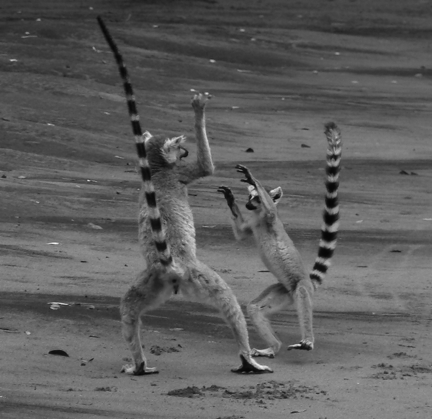 0 Comments on Friday Pet Blogging: Bentley as of 1/1/1900
0 Comments on Friday Pet Blogging: Bentley as of 1/1/1900

By: Lauren,
on 7/23/2010
Blog:
OUPblog
(
Login to Add to MyJacketFlap)
JacketFlap tags:
kate morton,
pet blogging,
redford,
cats and dogs,
house at riverton,
panting,
you…listening,
Literature,
squirrel,
A-Featured,
Leisure,
fitzgerald,
paws,
great gatsby,
whiskers,
nikita,
flapper,
Add a tag
By Redford & Nikita
Translated by Jen Quigley, Sales Associate, and Betsy DeJesu, Publicity Manager
Welcome to round two. Last week you met Redford and Nikita. Two brave souls attempting to bridge the gap between dogs and cats. As our two volunteers continue to explore their common love of literature, we are quickly learning that the written word does more than just spark conversation for your book club.
Redford: Nikita!!!! Nikita, Nikita. (Redford lies down and licks his paws). Thanks for agreeing to meet with me again. Last time I ate your catnip so…. (Redford knocks over his food bowl…but it is empty…sigh).
Nikita: Hello, Redford. Nice to…see you again. I was told that I should say that I’m excited to be here and to discuss all things literary. So there, I said it. Are you…listening to me?
Redford: Wait, what? Squirrel! (Panting)
Nikita: That sounds about right.
Redford: Okay, sorry I’m ready now. Let’s start off with the question on everyone’s mind. Number one book that tickles your whiskers.
 Nikita: Just one? Well, for the sake of this interview, I suppose I could choose just one…I’ll say the most recent book to make my whiskers shake was The House at Riverton by Kate Morton. It’s the story of an elderly lady, who served as a maid to an aristocratic family in England in the years before, during, and after World War I. She was the same age as the family’s two youngest daughters, and she kept some of their darkest secrets, including the truth about what really happened the night the man both sisters loved killed himself. The book vividly recreates the whole flapper, high society generation that took over post-World War I. And there is a mystery to boot. If there had been a cat in the book, then it would have been perfect.
Nikita: Just one? Well, for the sake of this interview, I suppose I could choose just one…I’ll say the most recent book to make my whiskers shake was The House at Riverton by Kate Morton. It’s the story of an elderly lady, who served as a maid to an aristocratic family in England in the years before, during, and after World War I. She was the same age as the family’s two youngest daughters, and she kept some of their darkest secrets, including the truth about what really happened the night the man both sisters loved killed himself. The book vividly recreates the whole flapper, high society generation that took over post-World War I. And there is a mystery to boot. If there had been a cat in the book, then it would have been perfect.
Redford: Coolness! Now let’s talk character. Right now, you and I are living the dream. Taking naps, chasing squirrels, pawing at things…Tell me Miss Nikita, if you had to do it all over again which literary character would you choose to live as? Person, cat, dog, jellyfish…be honest.
Nikita: Jordan from The Great Gatsby. But with less cheating at golf.
Redford: When did you first discover your love of books?
Nikita: From a very young age. When I wasn’t chasing feathers on the end of a string or trying to hide in closets, I always had a book in my paws. Reading is fundamental, people!
Redford: Author you’d like to share a yarn ball with?
Nikita: I’ll stick with the flapper theme and say F. Scott and Zelda Fitzgerald. They knew how to have a good time.
Redford: How do you feel about…Squirrel! Did you see it? Right there…he just…(Panting). How do you feel about those books with no pages? I think my person call them eReaders?
Nikita: They would be easier for me, I suppose, since I don’t have thumbs, and it’s hard to flip through pages without them. But I do love to curl up and take a nap on a good book. Nothing beats sleeping on warm paper.
Redford: Cool, cool. I still want to be an astronaut when I grow up…
Nikita: Of course you do.
Redford: Word of day?
Nikita: Felis cattus.
Redford: Thanks Nikita. I’d like to think that over the past two weeks you and I have brought closure to the mindless battle between cats and pups…well at least when it comes to paper…Pl

By: Lauren,
on 7/16/2010
Blog:
OUPblog
(
Login to Add to MyJacketFlap)
JacketFlap tags:
vuvuzela,
art of racing in the rain,
redford,
catnip,
Literature,
Twilight,
curious george,
squirrel,
A-Featured,
bone,
red sox,
Leisure,
stein,
World Cup,
garth stein,
paws,
yankees,
nikita,
Add a tag
By Nikita & Redford
Translated by Jen Quigley, Sales Associate, and Betsy DeJesu, Publicity Manager
Though the 2010 World Cup has drawn to a close, there is a very important lesson we can glean from that spectacular, month-long, global soccer match. And not just that vuvuzelas are very ear-splittingly loud. Instead, the World Cup has shown us that despite our many differences—of geography, culture, languages, time zones, and beers of choice—there are still certain things that can bring together even the most opposite of peoples.
In that spirit of unity, then, we wanted to foster a partnership between two of the world’s most, shall we say, unfriendly beings. We’re not talking about Team Jacob vs. Team Edward or the Yankees vs. Red Sox vendetta. We’re talking about the real deal. That’s right. Dogs and cats.
Though typically considered enemies and many times relegated to different parts of the yard, we are here today to take the first steps to bridge the gap between our species. Representing for canines will be Redford, and weighing in for the feline perspective will be Nikita. Redford and Nikita have agreed to meet on neutral territory to open up a dialogue and see if they can find some common ground for their people to run around on.
Nikita: Hello, Redford. Thank you for agreeing to this meeting. Please disregard the copious amounts of catnip I have sprinkled on the floor. It keeps me grounded during situations like this.
Redford: (Silence…Redford looks up from eating  catnip off the floor). Bone. Cat. Squirrel. (more chewing).
catnip off the floor). Bone. Cat. Squirrel. (more chewing).
Nikita: Let’s start. I figured that since we are both big readers, we could discuss our love of the written word.
Redford: I like book. Smells good. Tastes even better. Squirrel!!! (Redford takes off and returns several moments later out of breathe.) I like book. (Panting….)
Nikita: Great. First question: What recent book, in your opinion, deserves two paws up and a tail wag?
Redford: Garth Stein, The Art of Racing in the Rain. Paws down. Stein took it to another level with this one. Intellectual pups, race cars, rain puddles and a bunch of tail wagging moments between person and dog. Truly an empowering moment for any young canine after reading this book. I mean, it’s our job to take care of our people and any person, cat or dog that thinks otherwise can duke it out with Mr. Stein.
Nikita: Who is your favorite character in literary fiction and why? It’s okay if it is a human. Or a cat. No one will judge.
Redford: Does the squirrel sitting outside that window count….
Nikita: What was your favorite book when you were a puppy?
Redford: That monkey, George. I like him. Yellow Hat. Hugs. Monkey.
Nikita: Blog vs. print?
Redford: Bone. Wait, what? Oh sorry. My little legs prevent me from reaching the computer screen. Print. Read it. Eat it. Pee on it. Enjoy it.
Nikita: Steampunk or YA fiction?
Redford: When I grow up I’m going to be an astronaut. (Redford lies down to lick his paws and scrounges for catnip crumbs,)
Nikita: Thank you for your time, Redford. I hope thi

By: Lauren,
on 7/9/2010
Blog:
OUPblog
(
Login to Add to MyJacketFlap)
JacketFlap tags:
Literature,
maine,
lobster,
A-Featured,
Leisure,
Williamsburg,
spitz,
winslow homer,
jamie wyeth,
bakelite,
barc shelter,
john marin,
pet blogging,
rockwell kent,
savage grace,
seacoast maine,
stuie,
william zorach,
zero mostel,
zorach,
seacoast,
Add a tag
By Stuie
as narrated to Susan Fensten, Senior Publicist
I’m often understandably mistaken for a Pomeranian. We are cousins. I am a 4 year-old German Spitz Klein [small Spitz] and I was adopted by my human friend at BARC Shelter in Williamsburg. It was love at first sight.
But don’t let my silky fur and cute, little cookie face fool you, when it comes to reading I’m dead serious. Life is too short and there’s no time for fiction. I’m a true crime lover. There’s nothing better than curling up on my pillow spending hours lost in the fervor of a terrifying crime spree and its aftermath. The excitement, the fear, the victim/s, the suspect/s, the cops, the investigation, I love it. Then ultimately the trial and surprise verdict keeps me turning the pages.
Murder is the territory and the idle, filthy rich are the adventurers in this unique true crime story. Savage Grace: The True Story of Fatal Relations in a Rich and Famous American Family by Natalie Robins and Steven M.L. Aronson. Born into staggering wealth and privilege, Tony Baekland’s fate was sealed by the very elements which propelled him throughout his tragic life. His grandfather was the inventor of plastic, bakelite it was called, in its early form. A suffocating, beautiful mother, Barbara and a critical, distant and demanding father Brooks Baekland both lit the fuse that would later shock the world elite, the beautiful people. Poor unfortunate Tony. What could he do? Nothing, except to maybe put an end to all of the noise in his mind.
The book is told entirely through actual correspondence between family members and their wheel-heeled, well off friends. The Baeklands trundled aimlessly to the glamorous ports of the world, staying only for short spates before pushing on, writing mountains of letters, ever rambling. Chasing endless pursuits each more futile than the one before it. In their own words they express finely nuanced details about themselves as only the self can know. They reveal their insecurities, egos, their pettiness and pomposity, their dreams and crushing disappointments in themse![lobster roll[1]](http://blog.oup.com/wp-content/uploads/2010/07/lobster-roll1.jpg) lves and in each other. It’s a jungle of madness and murder, letters and locations and dark secrets.
lves and in each other. It’s a jungle of madness and murder, letters and locations and dark secrets.
My adoring human friends are taking me to Maine next week and I cannot wait. We are going back to Stonington on Deer Island in Penobscot Bay. We went there last year. I loved the pines, the tide washed coves, the sharp-eyed fledglings and most of all, the lobster rolls! Seacoast Maine: People and Places by Martin Dibner with photographs by George E. Tice is the per

By: Kirsty,
on 6/22/2010
Blog:
OUPblog
(
Login to Add to MyJacketFlap)
JacketFlap tags:
autism,
Leisure,
baron,
festival,
Early Bird,
jerry coyne,
hay festival,
asperger,
cohen,
hay-on-wye,
priya gopal,
simon baron-cohen,
steve jones,
gopal,
coyne,
Literature,
UK,
Current Events,
A-Featured,
literary festivals,
Add a tag
A couple of weeks ago I brought you a post on the Hay Festival by OUP UK’s Head of Publicity Kate Farquhar-Thomson. Today, for those of you who couldn’t make it to the Festival (like me), here are some of Kate’s photos from the few days she spent there.

The festival site from on high
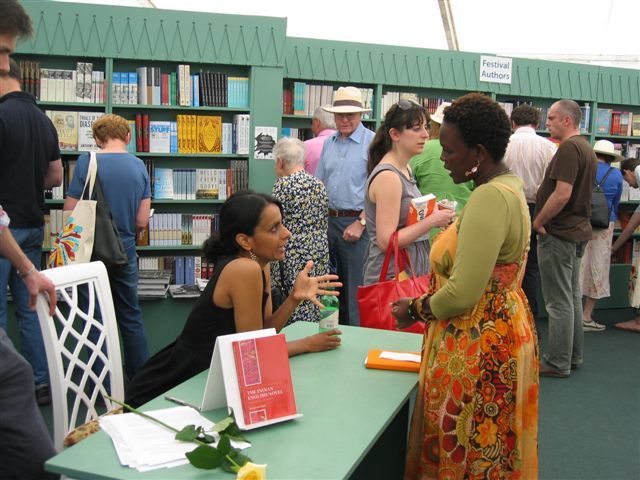
Priya Gopal, author of The Indian English Novel, speaks to a festival-goer

Scientists Steve Jones and Jerry Coyne. Coyne’s book Why Evolution is True was published by OUP in the UK.

Festival-goers on site. Doesn’t it look glorious?
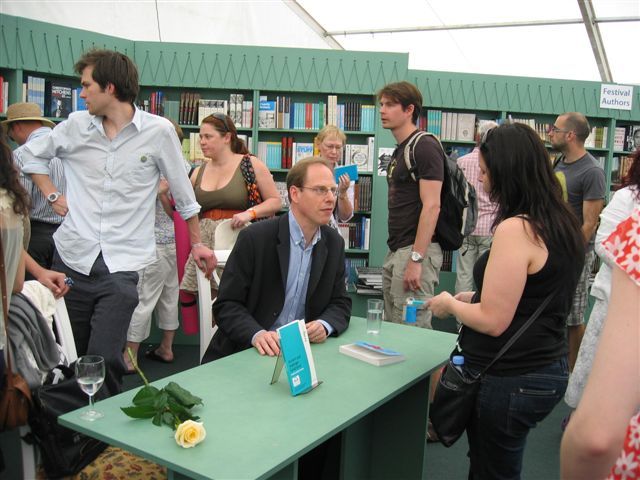
Simon Baron-Cohen, author of Autism and Asperger Syndrome: The Facts, signs books.


Posted on 6/11/2010
Blog:
OUPblog
(
Login to Add to MyJacketFlap)
JacketFlap tags:
football,
History,
UK,
Current Events,
A-Featured,
Online Resources,
Leisure,
greats,
odnb,
fabio,
crouch,
capello,
footballing,
sees,
Add a tag
Today sees the kick-off of the football (OK, soccer, but I’m British) World Cup in South Africa. Given that tomorrow sees England play the USA, this seems like the perfect time to bring you the below features from the Oxford Dictionary of National Biography.
By the way, in case you’re wondering, I’m not supporting anyone. I’m Scottish. We didn’t make it into the competition (again).
Who would Fabio Capello, England manager, have picked with the whole of British history to choose from?
Editors at the ODNB have drawn on more than 55,000 historical figures to select an alternative XI: Cole, Crouch, and Terry, but not as you know them. They appear alongside a team of true footballing greats who’d have had more of a chance.

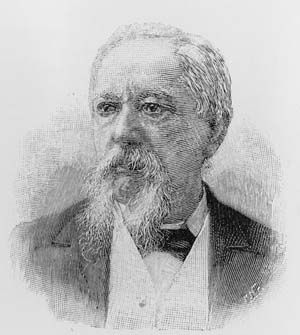
Crouch and Crouch


By: Rebecca,
on 6/9/2010
Blog:
OUPblog
(
Login to Add to MyJacketFlap)
JacketFlap tags:
enchanted,
Leisure,
musical,
tony,
Geoffrey Block,
score,
revivals,
tony’s,
Music,
quiz,
History,
Film,
Current Events,
American History,
Music History,
A-Featured,
Media,
musicals,
broadway,
Add a tag
Geoffrey Block, Distinguished Professor of Music History at the University of Puget Sound, is the author of Enchanted Evenings: The Broadway Musical From Show Boat to Sondheim and Lloyd Webber. The book offers theater lovers an illuminating behind-the-scenes tour of some of America’s best loved, most admired, and most enduring musicals, as well as a riveting history. In the original post Block challenges readers to test their Tony knowledge. We will post the answers next Wednesday so be sure to check back.
1. Who is Tony?
2. What was the first musical to win the Tony for Best Score?
3. What was the first musical to win the Tony for Best Musical?
4. What was the second musical to win the Tony for Best Musical?
Hint: This show made its debut only a little more than three months after the first winner.
5. In what year were the Tony Awards first nationally televised?
6. Who has the most Tony Award wins in the Best Score category?
7. What other lyricists and composers (or lyricist-composers) have won two or more Tony’s in the Best Score category?
8. Who has received more Tony’s than anyone else since the awards were established?
9. One winning musical in the Best Score category was the only musical nominated that year.
10. What year produced arguably the most impressive line-up of Tony nominated musicals?
11. So far there has been only one tie in the Best Musical category? Name the two shows.
12. Fourteen times in the last fifty years the Best Musical and Best Score winners were not the same. No less than half of these disparities have occurred in the past twelve years. What are the names of these last seven shows that won the Tony for Best Musical but not Best Score? What shows did win for Best Score in those years?
13. Name the two Best Musicals that went on to win Best Picture Oscars.
14. Name the three Best Musicals losers that went on to win Best Picture Oscars.
15. Starting in 1994, the Tony Awards decided to make the Best Musical Revival its own category instead of forcing musicals to share the award with revivals of plays. In the years since, the Best Musical Revival category has often proven to be fiercely competitive. Name the three winning revivals that first appeared before the launching of the Tony Awards and the four winning revivals that did not win a Tony Award for Best Musical the season of their Broadway debut.
16. The Four Questions: What show won the Tony for Best Musical in 1984? What Pulitzer Prize winning show lost that year? Who wrote the winning score? What controversial remarks did the winner utter on national television?
17. One composer had been dead for nearly 70 years when he won for Best Score. Who was this composer and what musical did he write?


By: Kirsty,
on 6/2/2010
Blog:
OUPblog
(
Login to Add to MyJacketFlap)
JacketFlap tags:
hay festival,
hay-on-wye,
town…,
town’,
stalls,
books,
Literature,
UK,
Current Events,
circus,
A-Featured,
castle,
welsh,
Leisure,
festival,
Early Bird,
literary festival,
bookshop,
Add a tag
The Hay Festival of Arts and Literature is one of the highlights of the UK literary calendar. Every year it takes place in Hay on Wye, a small village on the English-Welsh border, famed for its numerous bookshops. This year sees events from lots of big names including AC Grayling, Niall Ferguson, Ian McEwan, and Karen Armstrong. Several OUP authors are also doing events during the festival, including Anthony Julius, Ian Glynn, Robin Hanbury-Tenison, and Jerry Coyne.
OUP UK’s Head of Publicity, Kate Farquhar-Thomson, is also there, and this week will be sending her dispatches from the festival front line. Today, though, she writes about the other side of Hay.
It would be easy to make a list of the stars that I have spotted here at the Hay Festival since I arrived, or indeed the past colleagues I have worked with, but actually what strikes me more, on this visit, is what is going on outside the boundaries of the festival.
The fact is that whilst tens of thousands of people descend on this small Welsh border town for a week (or so) to mingle with politicians, models (oh yes, Jerry Hall was here!), historians, novelists and more, life around the UK’s premier ‘Book Town’ still goes on. I see tractors going about their farm business, sheep lambing and hay being made. However it is not only hay that is being made in Hay by the indigenous population. There are numerous little stalls of bric-a-brac, tea shops, cake stalls and plant sellers that have sprung up in gardens, on pavements, under tents and in driveways. The whole town embraces the festival and is keen to capitalise on it! Good for them I say. It happens but once a year and it is truly special. It is like the circus is in town… all encompassing but transient.

Some of Hay on Wye’s native residents.
Talking of circuses there is actually one in town in the grounds of Hay Castle this year. Giffords Circus, normally to be found every other year in a field just over the Hay Bridge has bedded down in the town centre this year. Within the castle, which was built in 1200, is a flat owned by Richard Booth, the self-proclaimed “King of Hay” whose eponymous bookshop stands at the centre of Hay and was the first second-hand bookshop to open here well over 40 years ago. And for the first time since I have been coming to Hay I actually met the man himself last Saturday night!


Posted on 5/14/2010
Blog:
OUPblog
(
Login to Add to MyJacketFlap)
JacketFlap tags:
Biography,
Current Events,
A-Featured,
Music,
songs,
African American Studies,
Leisure,
rodgers,
horne,
lena,
“standards”,
furia,
horne’s,
arlen,
Add a tag
In honor of Lena Horne, who passed away last Sunday at the age of 92, Philip Furia has reflected on her legacy. Furia is a professor in the Department of Creative Writing at the University of North Carolina Wilmington and the author with Laurie Patterson of The Songs of Hollywood.
I would never pretend to be an expert on Lena Horne, but my research prompts me to make a few observations on her career as a singer of popular songs. Perhaps the most striking thing about her stellar career is that Lena Horne, alone among the great singers of her era, never introduced a hit song. The songs she is associated with are the “standards” of what’s been termed The Great American Song Book. In the television obituaries, for example, she was heard singing the classic songs of Cole Porter, Ira and George Gershwin, and Lorenz Hart and Richard Rodgers. Even her signature song, “Stormy Weather,” was originally written by Ted Koehler and Harold Arlen for Ethel Waters in the 1933 Cotton Club Revue. (Waters, supposedly, always resented the fact that Lena Horne had co-opted “her” song).
One reason why Lena Horne’s song repertory was confined to the great standards is that for most of her career she worked in Hollywood films. In a few of these films, such as Cabin in the Sky and Stormy Weather (both 1943), she had a leading role, but in most of her other films she had cameo roles where she sang songs as “performances” in night clubs and other settings. Rather than have her render new, untried songs, Hollywood studios took the safer route of having her sing tried and tested standards. Hollywood’s practice of recycling old songs, in fact, is one reason these songs became “standards” instead of simply fading away as most popular songs do after their heyday. (It didn’t hurt, too, that the studios often owned these old songs and stood to profit from their renewed popularity.)
Lena Horne’s greatest opportunity to introduce new hit songs came in 1946 when she was offered the lead in the Broadway musical St. Louis Woman, where she would have introduced such songs as “Come Rain or Come Shine” by Johnny Mercer and Harold Arlen. Horne, however, refused the lead because she felt that the show caricatured blacks—even though the book was written by two African-American playwrights. Without Horne, St. Louis Woman quickly folded, and the singer lost one of her few chances to introduce hit songs.


By: Rebecca Ford,
on 4/23/2010
Blog:
OUPblog
(
Login to Add to MyJacketFlap)
JacketFlap tags:
History,
Film,
American History,
American Revolution,
History Channel,
A-Featured,
textbook,
Leisure,
independance,
colonies,
Joy Hakim,
A History of US,
America: The Story of Us,
Early America,
hakim,
1791,
treaty,
ticonderoga,
hakim’s,
volumes,
colonist,
Add a tag
Julio Torres, Intern
A History of US is the James Michener Prize-winning collection of books written by Joy Hakim, a former teacher and editor. The series tells the story of the nation through its ten volumes. For the next six weeks, starting Sunday, the History Channel will air their ambitious chronological series, America: The Story of Us.
Since A History of US and America: The Story of Us, follow the same timeline we thought it would be fun to share some of American history’s lesser-know facts found along the margins of the books. Make your way through the nation’s history as we enlighten you with facts and challenge you with trivia questions inspired Hakim’s volumes.
First up, trivia questions from books 2 and 3, Making Thirteen Colonies and From Colonies to Country, corresponding to the History Channel’s first week of the series (premiering April 25th) dedicated to the colonies and the Revolutionary war. Don’t be discouraged if most of these feel obscure, chances are they were bonus questions back in Middle School. The answers are at the bottom of the post. Be sure to check back in the coming weeks for more fun content related to our nation’s great history. Read an original post by Hakim here.
What state was its own nation from 1777 to 1791 and became the first state to outlaw slavery?
Which Shakespeare play was inspired by the wreck of the colonist ship, the Sea Venture?
What state name means “at the big hill” in Algonquian?
Which treaty officially ended the French and Indian War?
What famous, brave soldier switched sides from the Patriots to the British in 1780? (He captured Fort Ticonderoga)
Answers: Vermont, The Tempest, Massachusetts, The Treaty of Paris, Benedict Arnold


By: Rebecca,
on 4/19/2010
Blog:
OUPblog
(
Login to Add to MyJacketFlap)
JacketFlap tags:
tips,
travel,
Reference,
summer,
A-Featured,
A-Editor's Picks,
guide,
atlas,
Leisure,
Add a tag
Grace Labatt, Acquisitions Editor, Reference
Everyone has a favorite place in the world. Mine happens to be on that most derided of beaches, the Jersey Shore. (Thanks, Snooki.) I love escaping the gridlock and heat of Manhattan to the  peaceful Shore, with its beautiful beaches, tons of activities—biking, crabbing, beach volleyball, fireworks watching, to name a few—and excellent ice cream. It’s just a short trip from New York, but feels like a different world.
peaceful Shore, with its beautiful beaches, tons of activities—biking, crabbing, beach volleyball, fireworks watching, to name a few—and excellent ice cream. It’s just a short trip from New York, but feels like a different world.
Traveling there is easy: just hop on New Jersey Transit from Penn Station. Traveling across the world, though, is never a breeze. Just as everyone has a place they love to escape to, everyone knows what a pain it can be to get there. In anticipation of the quickly approaching summer, below are some tips from Oxford editorial staff and authors on the best ways to get around the world—or, if you’re not sure where you’re headed yet, tips on where to go!
For more travel destinations, check out the New Concise World Atlas Third Edition, which has hundreds of full-scale maps from around the globe.
Amber Fischer, Senior Editor, Oxford Art Online and Oxford Music Online: Pokhara is definitely worth a visit if you’re in Nepal and is a relaxing alternative to Kathmandu….Or try Wolsey Lodges if you’re looking for something different. Mostly in the UK (although there are also some in France and Spain), they are mostly beautiful, grand, historical homes where the owners choose to rent out a room or two to travelers. You get luxury (or at least really cool and historical) accommodations for usually 45-85GBP per night, and you’re almost always invited to dine with the owners, who always seem to be down-to-earth and friendly.
William Beezley, Editor of the Oxford History of Mexico: For absolutely excelente lunches with reasonably priced wine go to the Casino Español in Mexico City. I go at least once on every trip. A delightful museum is the Museo de Arte Popular, a new museum with excellent examples of popular art of all kinds and a good bookstore and coffee shop. The building was once a fire department.
Mary Funchion, Development Editor, Reference: Before I book an airline ticket, I use Kayak.com. It compares all the airlines and lets you know which ticket is the cheapest option. You have to leave the site to actually book the ticket, but it saves having to g

By: LaurenA,
on 4/7/2010
Blog:
OUPblog
(
Login to Add to MyJacketFlap)
JacketFlap tags:
fiction,
The,
College,
80,
Manhattan,
Robert,
Geraci,
Rokk,
level,
sci,
fi,
Life,
science fiction,
robots,
Technology,
Science,
apocalypse,
A-Featured,
Western Religion,
World,
of,
aliens,
Warcraft,
Second Life,
World of Warcraft,
Leisure,
sci fi,
Second,
AI,
Apocalyptic AI,
level 80,
Manhattan College,
Robert Geraci,
skynet,
The Rokk,
Apocalyptic,
Add a tag
Lauren Appelwick, Publicity
Robert M. Geraci is Assistant Professor of Religious Studies at Manhattan College. In his new book Apocalyptic AI: Visions of Heaven in Robotics, Artificial Intelligence, and Virtual Reality, he examines the “cyber-theology” which suggests we might one day upload our minds into robots or cyberspace and live forever. Drawing on interviews with roboticists, AI researchers, Second Life devotees, and others, Geraci reveals that the idea of Apocalyptic AI is strikingly similar to Judeo-Christian apocalyptic traditions. Here, he shares 10 ways World of Warcraft, one virtual reality game, could help us survive the end of the world as we know it.
1. The dangers will be minimal…level 80 priests can provide universal health care.
President Obama plans to insure 32 million more Americans than are currently protected; but the area of effect healing spells of priests can jump from one person to another, healing them as they become sick and injured without need for hospital visits, insurance payments, etc. This approach to medical treatment has obvious benefits over the constant paperwork that federally mandated insurance will require.
2. When aliens come to take over the planet, they’ll get addicted to WoW and forget what they were doing.
Instead of world domination, aliens will hope to complete all four daily cooking quests for The Rokk. After they’ve already eaten Emeril, they’ll spice up their life with Super Hot Stew and realize that people don’t taste all that good after all.
3. Who needs indoor plumbing? You’re already used to peeing into bottles.
Your guild’s “friendly” three day race to level 80 has given you all the continence you need…and the willingness to do what you must when the time comes.
4. After countless hours of farming for minerals, herbs and animal hides, you’re well prepared for life after subprime mortgages collapse the economy.
Let’s face it, the economy is in shambles and no one knows when it will recover. On the other hand, while toxic mortgage securities provide neither housing nor security, a proper skinner can ensure that all the local children stay warm through the winter.
5. Gnomish engineers will program the robots to like you (though they can’t guarantee proper functioning).
It’s not the Gnomes’ fault that Skynet became self-aware…they didn’t think it would defend that off switch so vociferously! And to compensate, they’ll happily upload your mind into one of their inventions so that you can join the robots in their post-apocalyptic future.
6. As the value of the dollar declines, gold and mithril will remain safe investments.
Gold will shine through the darkest of times and foreign governments will always be content to buy it from you at the auction house.
7. Your family pet can take aggro for you while you lay a fire trap to destroy a zombie mob.
A lifetime of treats and petting repaid in one priceless moment.
8. Your potions of underwater breathing will let you grab the a

By: AnneZ,
on 3/11/2010
Blog:
OUPblog
(
Login to Add to MyJacketFlap)
JacketFlap tags:
books,
History,
book,
Literature,
Reference,
Religion,
A-Featured,
ebooks,
Leisure,
codex,
book production,
oxford companions,
scroll,
Add a tag
Anne Zaccardelli, Library and Online Sales Assistant
The Oxford Companion to the Book is the first reference work of its kind covering the broad concept of the book throughout the world from ancient to modern times. Edited by Michael F. Suarez, S.J.  and H. R. Woudhuyen, it consists of topical essays as well as A – Z entries. Michael F. Suarez, S.J. is University Professor, Director of the Rare Book School, and Hon. Curator of Special Collections at the University of Virginia. H. R. Woudhuysen is Professor of English at University College London. In the post below, I talk about the ebook format compares and contrasts with various book formats throughout history.
and H. R. Woudhuyen, it consists of topical essays as well as A – Z entries. Michael F. Suarez, S.J. is University Professor, Director of the Rare Book School, and Hon. Curator of Special Collections at the University of Virginia. H. R. Woudhuysen is Professor of English at University College London. In the post below, I talk about the ebook format compares and contrasts with various book formats throughout history.
This past December, I received a Kindle for my Christmas present. As you can imagine, I’ve been fielding questions and comments from not only my friends and family, but from random people on the subway and at the coffee shop. Often, these conversations become affirmations about how one could never forsake a physical, paper book.
“I could never use an e-reader,” they say, “I like the smell of books.”
“A book is like a trophy—I love putting it on my shelf when I’m done.”
Of course, they stare at me blankly when I tell them that reading just one ebook on an e-reader might make them change their opinion.
With the introduction of another e-reader, the ipad, many of us are contemplating the future of the book. To put these developments in perspective, I decided to see what The Oxford Companion to Book had to say about history of the book. After all, writing once made the jump from the scroll to the codex—did our ancestors really miss the smell of a scroll or rolling it up?
While I didn’t find a list of complaints, though I did come to a better understanding about how the book has changed throughout history. In Craig Kallendorf’s essay, The Ancient Book, he explains that in the Western world the use of parchment to create scrolls left the manuscripts too heavy so fashioning it into a codex was more desirable. Moreover, with the rise of Christianity, it was much quicker to locate a biblical passage in a codex than in a scroll. The same can be said of our e-readers—I can carry my 1,000 page book in a 10.2 ounce container. And while I’m no longer able to dog-ear my pages on my e-reader, if I need to look up a definition of a word all I have to do is rest the cursor in front of a word.
The idea of convenience also turned up in the essay, The Electronic Book by Eileen Gardiner and Ronald G Musto. It turns out that our average paperback book of today may have not been the most desired format for “readers” in the medieval age.
In Europe, the original manner in which books were produced was, of course, by hand. However, these books weren’t just books, they were works of art—each manuscript was an o

By: Julio,
on 3/3/2010
Blog:
OUPblog
(
Login to Add to MyJacketFlap)
JacketFlap tags:
Literature,
Art,
Philosophy,
A-Featured,
stage,
Leisure,
performance,
Paul Woodruff,
The Necessity of Theater,
Add a tag
Julio Torres, Intern
Paul Woodruff is a professor of philosophy and classics at the  University of Texas at Austin. In his latest book, The Necessity of Theater, Woodruff articulates why we created theater, why we practice it, and above all, why we need it. Throughout book, poignant examples of our day to day need for watching and being watched are weaved in with cornerstones of our traditional definition of theater—football is compared to Hamlet, family weddings with Waiting for Godot. In the following excerpt, Woodruff picks apart the role of spatial definition in both traditional and day to day theater.
University of Texas at Austin. In his latest book, The Necessity of Theater, Woodruff articulates why we created theater, why we practice it, and above all, why we need it. Throughout book, poignant examples of our day to day need for watching and being watched are weaved in with cornerstones of our traditional definition of theater—football is compared to Hamlet, family weddings with Waiting for Godot. In the following excerpt, Woodruff picks apart the role of spatial definition in both traditional and day to day theater.
Why does theater need a measured space? In order to practice the art of theater successfully, some people must be watching the actions of others. Whether your job tonight is to watch or be watched, you need to know which job is yours; the watcher-watched distinction is essential to theater. We shall see that even this can break down at the end of a theater piece, with marvelous consequences. But one of those consequences is that the event is no longer theatrical. When no one is watching, it’s not theater; it has grown into something else. Marking off space in theater is a device for meeting the need to distinguish the watcher from the watched. In most traditions there is a circle or a stage or sanctuary or a playing field.
Plot measures time better than a clock does, but what could measure space? This is a hard question, because theater space seems to be much more elastic than theater time, and nothing serves the function of plot to give space a structure that is comparable to the beginning, middle and end of the time in theater.
Back to the green lawn in front of the tower, the lying plastic disks, and the leaping, twirling young men. Suppose that, after our meeting concludes, we return past the same green and see the students still playing. Our meeting ended early, and we have time to watch again. The throes are longer now: one student leaps the hedge to catch a long throw; his friend dashes down the steps to retrieve another. In the pause for retrieval, the third player recognizes one of us, and, as a challenge, throws her an extra disk that had been kept in reserve on top of his backpack. Wordlessly, one of us moves into the green and we commence to play, a separate game, fully clothed and far less skillful. But on the same ground. The student players shift slightly to make room for us.
The student game never had boundaries, although perhaps the green looked as if it gave the players a spatial boundary. But no. They violated nothing when they leaped over the hedge and we violated nothing when we stepped through a gap in the hedge and began our own game.
But imagine the outcry if the nest football game between Texas and Oklahoma went the same way. In this stadium, there is a line drawn on the grass, and it marks the space for the game. If a player crosses the line, he must pay a price for that. The game will stop if he does not stay sitting in the front row at this game, grow bored with the poor quality of play, we might decide to start our own game of catch on the same field during the game. But to do so would be to risk being disarmed by the crowd. We would be straying into sacred space. Certainly, this space is sacred to this crowd of football fans. (I almost said “worshipers, but football mania is not worship. It merely resembles worship.) And for an audience member who intrudes on that space the price is much higher than for a player to stray outside it.
“Sacred” is a word we have almost l
View Next 25 Posts









 0 Comments on Friday Pet Blogging: Bentley as of 1/1/1900
0 Comments on Friday Pet Blogging: Bentley as of 1/1/1900



![lobster roll[1]](http://blog.oup.com/wp-content/uploads/2010/07/lobster-roll1.jpg)








 peaceful Shore, with its beautiful beaches, tons of activities—biking, crabbing, beach volleyball, fireworks watching, to name a few—and excellent ice cream. It’s just a short trip from New York, but feels like a different world.
peaceful Shore, with its beautiful beaches, tons of activities—biking, crabbing, beach volleyball, fireworks watching, to name a few—and excellent ice cream. It’s just a short trip from New York, but feels like a different world. and
and  University of Texas at Austin. In his latest book,
University of Texas at Austin. In his latest book,